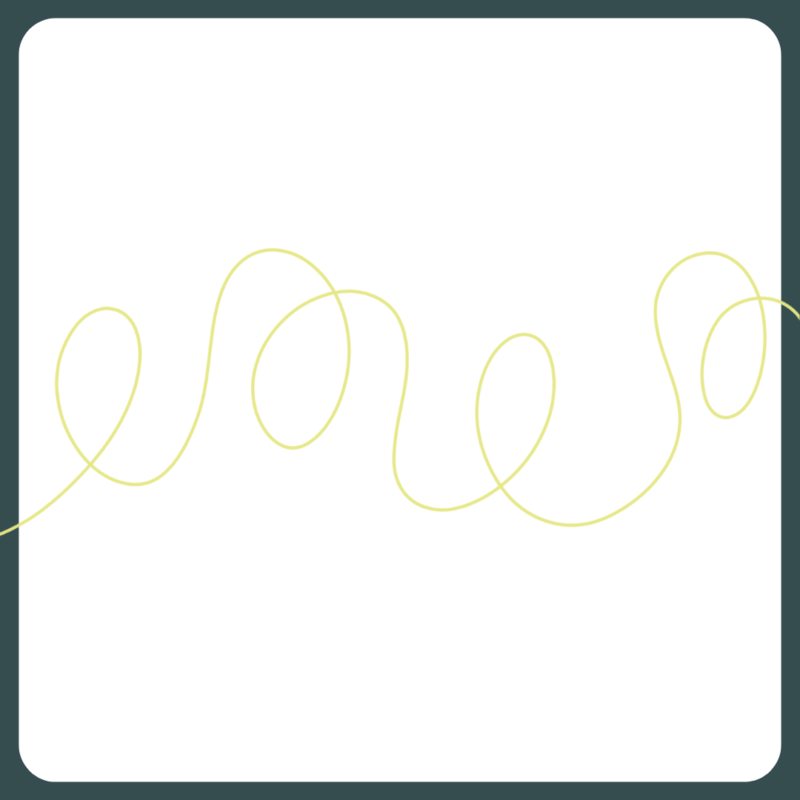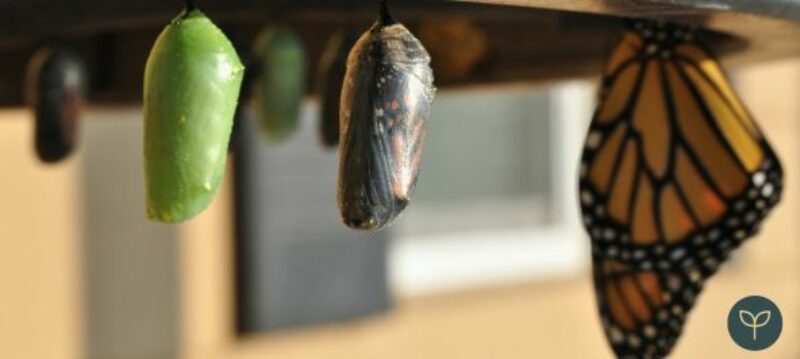I have a confession: I avoided going back to college for nearly a decade. I needed a change in my early 20s and began traveling and volunteering with social justice organizations working with incarcerated populations in South America. I absolutely loved the work I was doing and I honestly grew and changed immensely during that decade of my life. But ultimately, I felt stuck.
Recently, I reflected back on those years and the limiting thoughts that lingered beneath the surface in my mind. To give you a brief snapshot (because the list could go on and on…)
- “I’m too old to go back to school now.”
- “ I can’t do this work in Los Angeles.”
- “No one will pay me to do this work.”
- “I’m probably not even qualified.”
- “It would take 6-7 more years of education to make any real difference and I can’t do that for X, Y, Z reasons…” (you get the picture)
If I’m completely honest, it was easier for me to avoid taking the next step toward making a change (or even believing that I could change) than it was for me to be open and flexible about change in general.
In life, nothing truly stays the same; change is inevitable.
Even with consistent changes, like the changing of the seasons or the sun rising again each morning, we face variation, uncertainty, and the unexpected nuances of a new day or new season. But facing inevitable change, or feeling forced to change, whether due to intentional transitions
- like graduating from high school or college, starting a new job or ending a job, etc.
or unintentional transitions
- like facing illness, losing a loved one, not getting accepted into the school or getting the job you wanted, etc…
can cause discomfort, anxiety, and unwanted stress.
How do we learn to embrace change with more openness and curiosity, rather than avoid it, hold tightly to what is familiar, or passively wait for change?
In general, our brains operate off of consistency or maintaining a steady state: when there is variation in our environment or circumstances, the body seeks to return to a state of homeostasis or balance. Physiologically, we sweat when we’re hot to cool us down to a baseline temperature, our heartbeat speeds up and slows down based on activity level, and our bodies filter our blood and the nutrients we consume to sustain us, etc… This regulates us during change.
Psychologically, when we experience an unexpected sensory event or something unexpected happens, the brain is wired to make sense of it, often causing us to feel a heightened state of arousal or awareness – as the brain searches for appropriate action to take. Arousal states trigger increased stress hormones (like cortisol) which are intended to help us respond to stress or act in response to danger. However, under prolonged periods of stress, heightened arousal can make it difficult to act.
When we face change, especially when there is ambiguity or uncertainty about it, or a sense of not feeling safe or settled in response to the change itself, we can get stuck with our nervous system ramped up – feeling on edge, fearful, irritable, or possibly shutdown and paralyzed.
In our minds, we can get stuck in loops searching for meaning, trying to logically make sense of this new scenario. In turn, we can feel stuck in not knowing how to respond to change or what to do. Or, much like my 22-year-old self, we can get stuck in unhelpful thoughts about our inadequacy or inability to change.
Remaining surrounded by people, jobs, environments and activities that are familiar to us is a way that we (knowingly or not) try to keep ourselves safe. We reduce the possibility of experiencing uncomfortable emotions or a heightened nervous system (that often feels like unsettling anxiety, dread, or panic) by simply avoiding change.
But what if we didn’t have to avoid those feelings? What if those feelings were there to tell us something, to bring attention to something that really matters to us? To get us to act – to do something to bring us back to a regulated state?
Psychological Flexibility
Psychological flexibility can be understood as “the ability to act mindfully, guided by our values” (Harris, 2019, p.8). According to the psychological flexibility model of human functioning and adaptability developed by Steven Hays, being psychologically flexible involves the following practices:
- openness to the full experience of being human,
- not overly identifying with thoughts or emotions,
- mindfully being present with flexible attention,
- knowing what matters, and doing what it takes.
Hays distills these practices down into three core responses to change and challenging life circumstances – being open, centered, and engaged. How we respond to change is directly connected to how we cultivate adaptive practices of psychological flexibility and how we view ourselves in the process.
The alternative is responding with rigidity, fear, or inaction – which often involves viewing ourselves as defined by our thoughts, feelings, and memories. Looking back, I can say that my inaction and avoidance of going back to college in my mid-20s was driven by the fact that I allowed those limiting thoughts listed above to define me; I believed they were true about me and my circumstances to an inflexible degree.
Responding to change with openness can help our nervous system slow down, connect to the present moment, and recenter ourselves in our values. When the unexpected occurs, it is even more critical to tend to ourselves with compassion and kindness, rather than jump to conclusions or become stuck in a cloud of anxiety.
I explain more details about how to practice becoming more open, centered, and engaged in Part 2 of this post. For now, explore the following body-based mindfulness practice to observe your thoughts. In this way you can cultivate new patterns that allow you to open, be present, and centered in your values.
Shifting the Inner Critic to the Inner Nurturer, and teaching our bodies that we can also find strength in being tender with ourselves.
Rooted in a Buddhist teaching of The Two Arrows, psychologists and researchers Ron Siegel and Hillary McBride advocate for mindfully disrupting the process of shooting the second arrow. In the teaching of The Two Arrows, life shoots the first arrow – inflicting pain through an unexpected life circumstance, illness, or loss — and in response, we automatically fire a second arrow – often aimed right back at ourselves. The second arrow often adds to our pain and suffering, through our thoughts, emotions, and what we tell ourselves and others about our experience. I shot the second arrow in my thoughts regarding going back to school, limiting my ability to change or respond to changes around me and instead adding to my inner turmoil about what to do next. I needed to learn to disrupt the process of shooting the second arrow — and accept that while I can’t control the first arrow, I can control my reaction to it.
Shifting our Inner Warrior Critic to Inner Nurturing Friend: a practice of shifting from tightness and tension to mindfully opening, relaxing our muscles, and providing nurturing care
- Imagine standing in a wide-legged warrior stance with one arm holding an imaginary bow and the other pulling back an imaginary arrow (or, if you are able, assume the posture and engage in the movement with your body) — as you pull back the imaginary arrow, inhale and focus on the pain or distress you are experiencing regarding ________ (change).
- Notice where this pain or tension is living in your body at this moment, and exhale with your focus on this area. Take another breath in and slowly exhale out with a focus on this specific tightness, relaxing your grip on the imaginary bow as you lower your arms and assume a comfortable seated position.
- Continue to breathe in for a count of 4, and slowly exhale for a count of 6.
- What posture would you take to provide nurture to your closest friend if they were in distress?
- Imagine yourself giving the same nurturing support to yourself (or, if you are able, physically move your body in a manner that portrays a posture of nurturing friendship toward yourself).
- This might include wrapping your arms around your shoulders in a hug, rubbing your arms, legs, or head, or stroking your hair.
- Imagine your response to a friend’s pain and distress, and then convey the same message to yourself.
- By mindfully shifting attention from the inner warrior critic that aims a second arrow right back at us, we can learn to strengthen our inner nurturing friend. This alternative response gradually disrupts our automatic habits of shooting arrows of self-blame, self-criticism, and worst-case-scenario-predictions. It slows down our nervous system responses and encourages a more clear and kind approach to our struggle. Safe, gentle touch, even from ourselves has been shown to reduce pain and increase our ability to release tension and feel comforted.
- While we cannot avoid change or control the changes that occur in our lives, we can learn to respond with kindness, curiosity, and a nurturing presence – without adding more pain or distress in the process.
*See “The Wisdom of Your Body” by Hillary McBride (2021), and “The Mindfulness Solution: Everyday Practices for Everyday Problems” by Ron Siegel (2010)
References / Additional Information:
Harris, R. (2019). ACT made simple: An easy-to-read primer on acceptance and commitment therapy. New Harbinger Publications.
Hayes, S.C., Strosahl, K. D., & Wilson, K. G. (2012). Acceptance and commitment therapy: The process and practice of mindful change. Guilford Press.
Kashdan, T. B., & Rottenberg, J. (2010). Psychological flexibility as a fundamental aspect of health. Clinical psychology review, 30(7), 865-878.
O’Donohue, J. (2008). To bless the space between us: A book of blessings. Convergent Books.
Van Kampen, H. S. (2019). The principle of consistency and the cause and function of behaviour. Behavioural processes, 159, 42-54.
Continue Exploring

Emotions
A Practice: Shift Your Inner Critic to an Inner Nurturer
Here's how to shift your inner critic to the inner nurturer by teaching your body that you can also find strength in being tender with yourself.

Agility
Why Can’t I Change? How Flexibility Might Be the Key to Getting Unstuck (Part 2)
We can thrive by flexibly facing change, rather than avoiding it. This post is Part 2 of a two-part series.

Agility
A Practice: Values-Based Living
Identifying your values to figure out how you would like to show up in pursuit of what matters most to you
